Odre
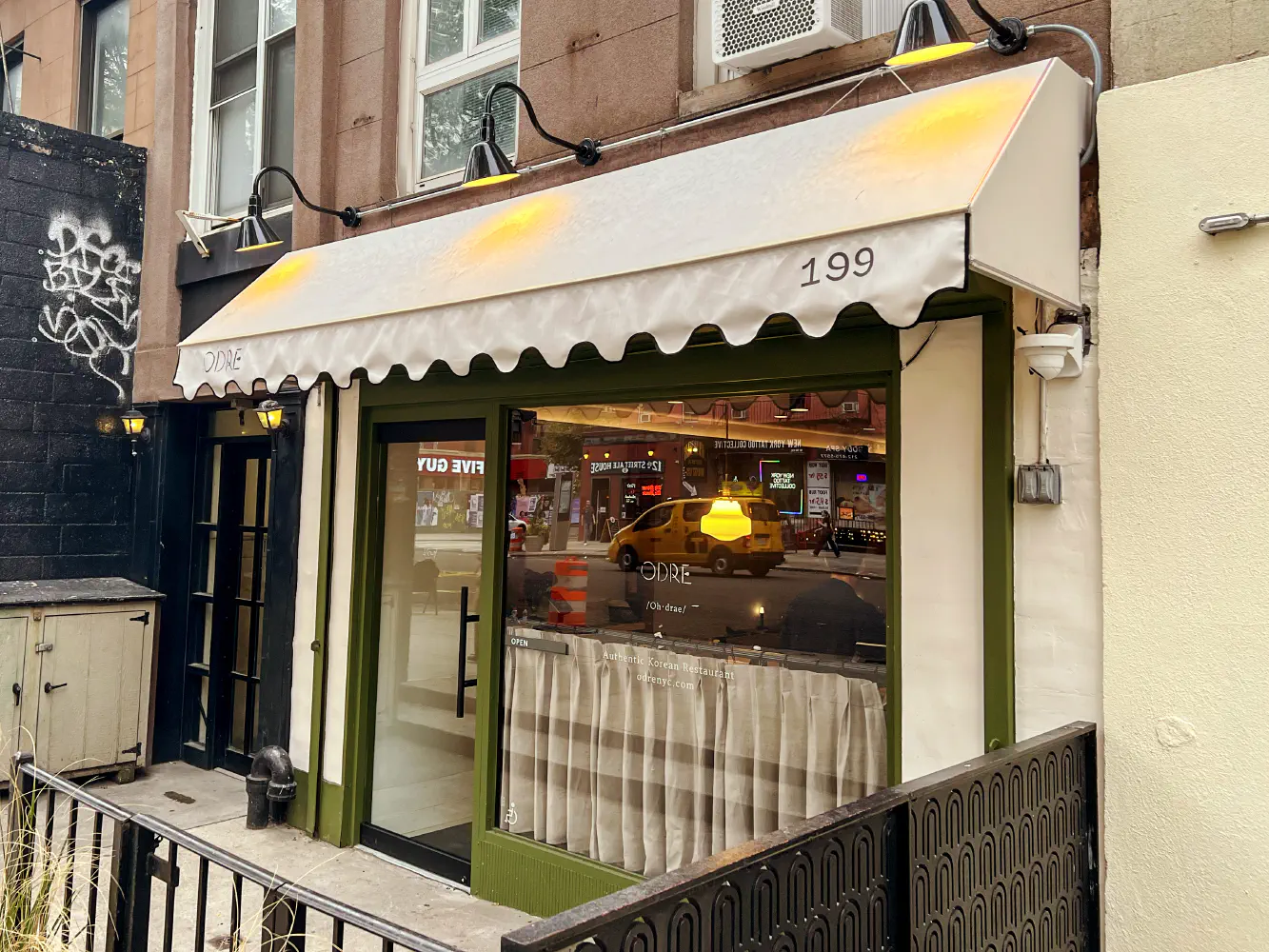
Odre recently opened a little over a month ago, and it was on my list to checkout. Similar to other Korean small-tasting restaurants, this offered an inexpensive tasting of Korean rustic-style cooking. The restaurant is part of the Hand Hospitality network, which includes Nonono, Cho Dang Gol, Jua, Okdongsik, and many more. I was able to make a reservation fairly easy a few days prior to our visit for a 5:30 PM Friday evening dinner.
From their website:
ODRE, means ‘Welcome’ in a regional dialect spoken in Gangwon Province, Korea.
ODRE offers an authentic Korean dining experience with a four-course prix fixe menu. Each course highlights seasonal ingredients and concludes with Bansang, featuring six made-to-order banchan (side dishes), along with rice and soup prepared at the gamasot bar.
A “Gama-sot” is a traditional Korean large iron pot used for cooking. Gama-sot is commonly used in Korean households for preparing dishes like stews, soups, and rice. Its design allows for even heat distribution, which is ideal for slow cooking and achieving rich flavors.
To create an authentic Korean dining experience, where the aroma plays a central role in tantalizing the senses, we feature three traditional Gama-sots at the heart of our service area. These vessels are placed to ensure that the freshest scents from simmering food are immediately present, enhancing the sensory appeal of the meal. We hope you enjoy the harmonious blend of dishes meticulously prepared by chefs who have deeply explored Korean cuisine, along with freshly cooked rice.
Ambiance & Service
The interior was pretty no-frills and very similar to other modern Korean restaurants around the city. To my surprise, it was not very bustling until a larger table sat behind us and were very loud. When this happened, it was somewhat difficult to hear our conversation at a reasonable volume.
The service was very speedy, and they turned over our table reasonably fast.
Food
The prix-fixe menu was $42 per person. It came with 4 courses, where the 3rd (protein) and 4th (rice) course came together.
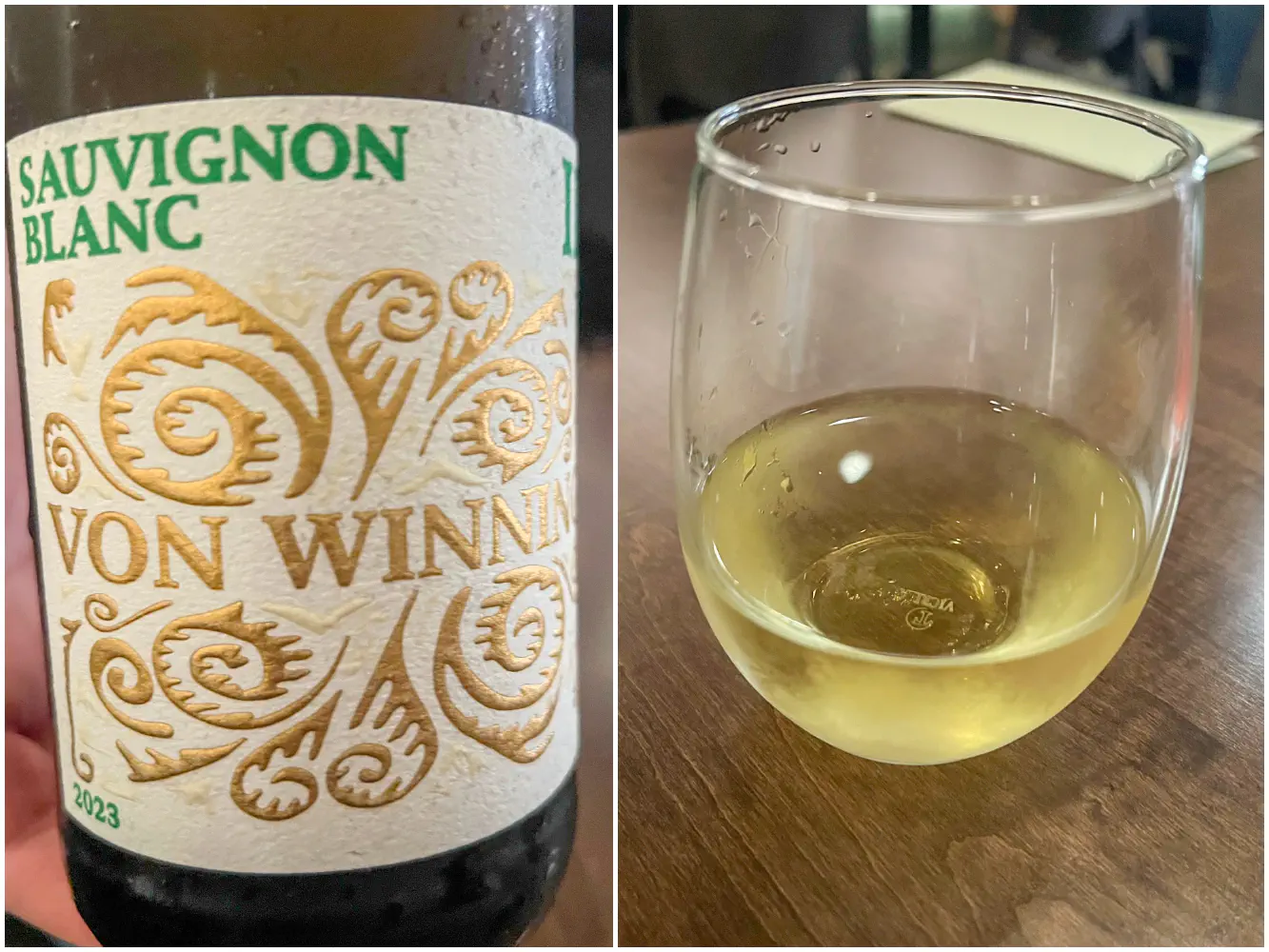
I ordered a glass of Von Winning, Sauvignon Blanc II ($13) which came from Pfalz, Germany 2023. This had some nice green fruit flavors to it, and it finished very round as you sip on it. It had some notable minerality to it, and would be complementary with any seafood dish here.
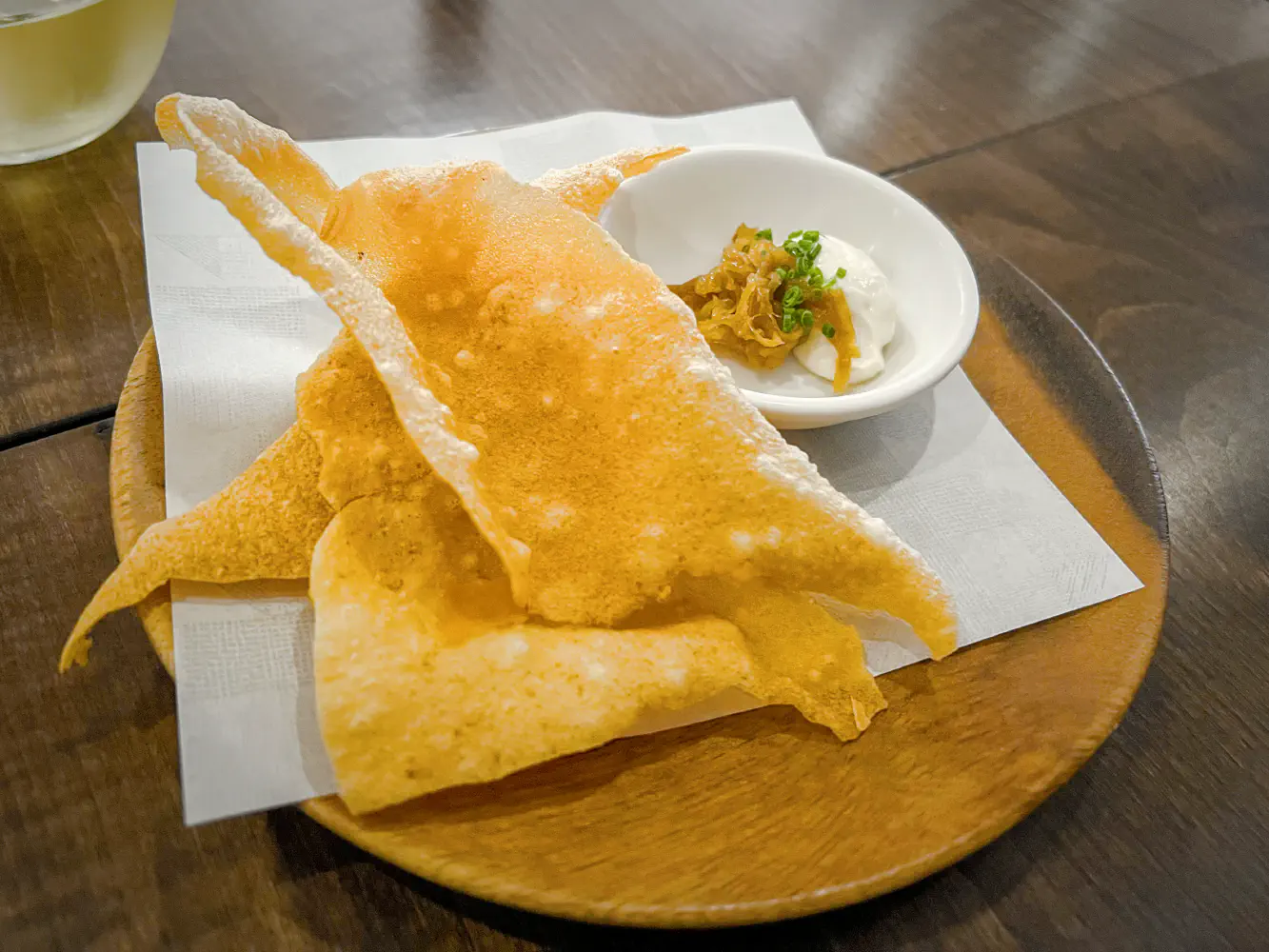
They gave us complimentary chips which had some type of root vegetable along with vegan sour cream. It was pretty good. The chips was similar to a less greasy version of wonton chips.
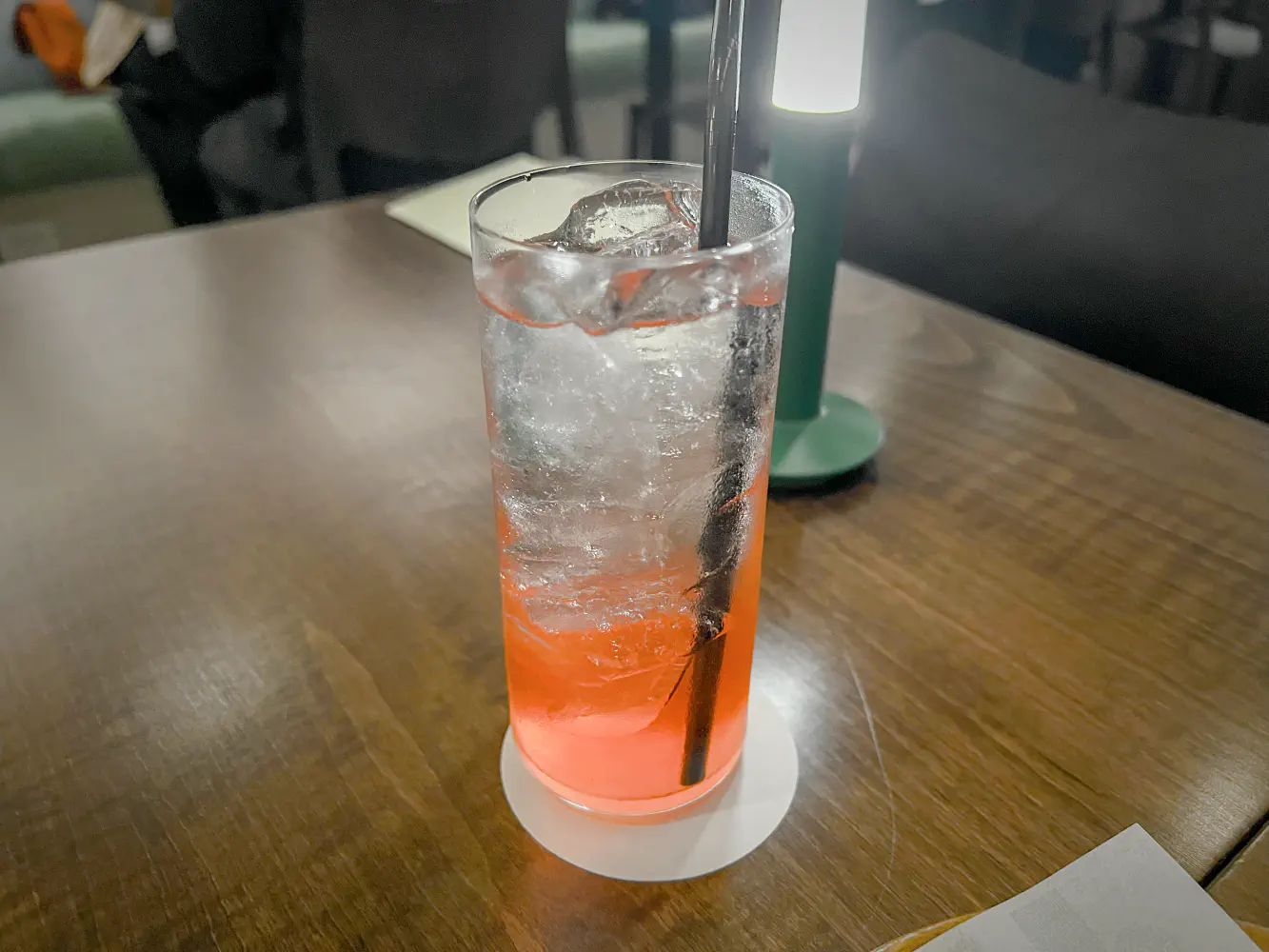
The Hey Bae ($16) came with Seoul night, pear shrub, rosemary, and soda. This was not too sweet for me, and it was a pretty simple fizzy cocktail.
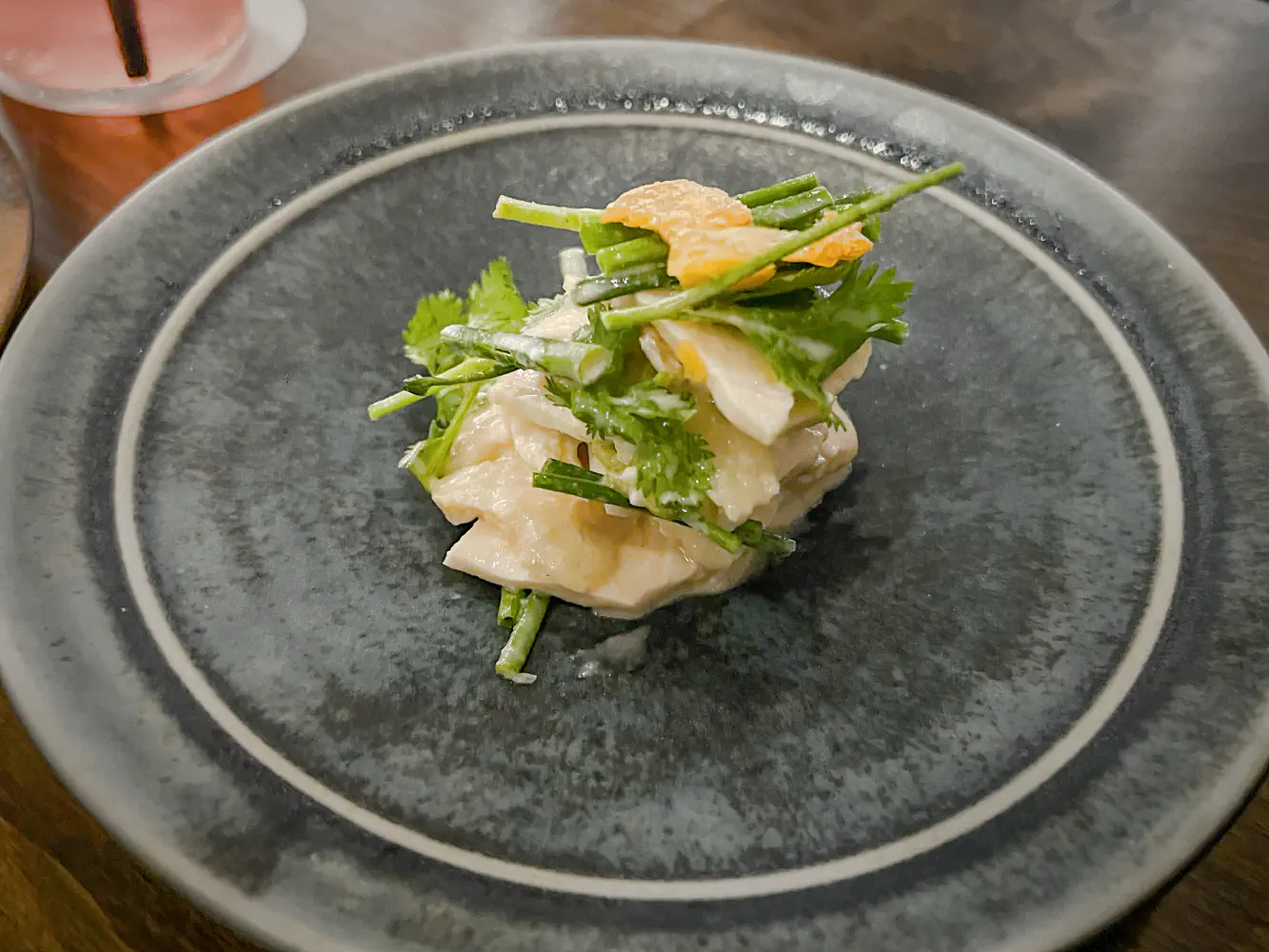
The first course for my partner was the Sesame Chicken, which came with Korean pear, chive, cilantro, and sesame mustard sauce. This was decent. This reminded me of Chinese sesame chicken, but with far less sesame flavors. The mustard definitely was there since it had that slight horseradish kick to it. The pear brought subtle sweetness to it.
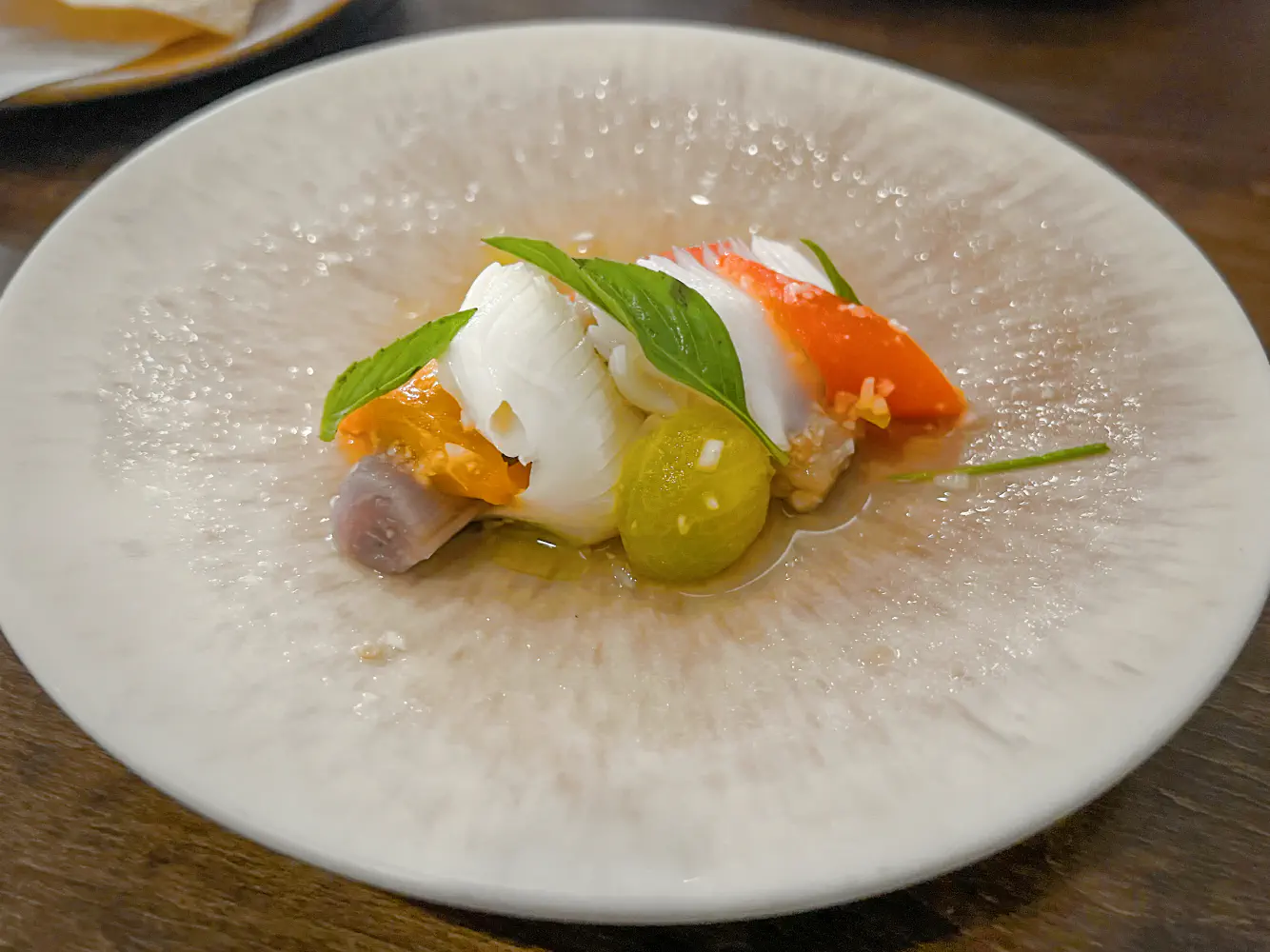
My first course was the Cuttlefish Salad, which came with tomato, paprika, eggplant, and garlic dressing. There were 2 pieces of cuttlefish, and it was very tender. Everything else was just fairly light as expected.
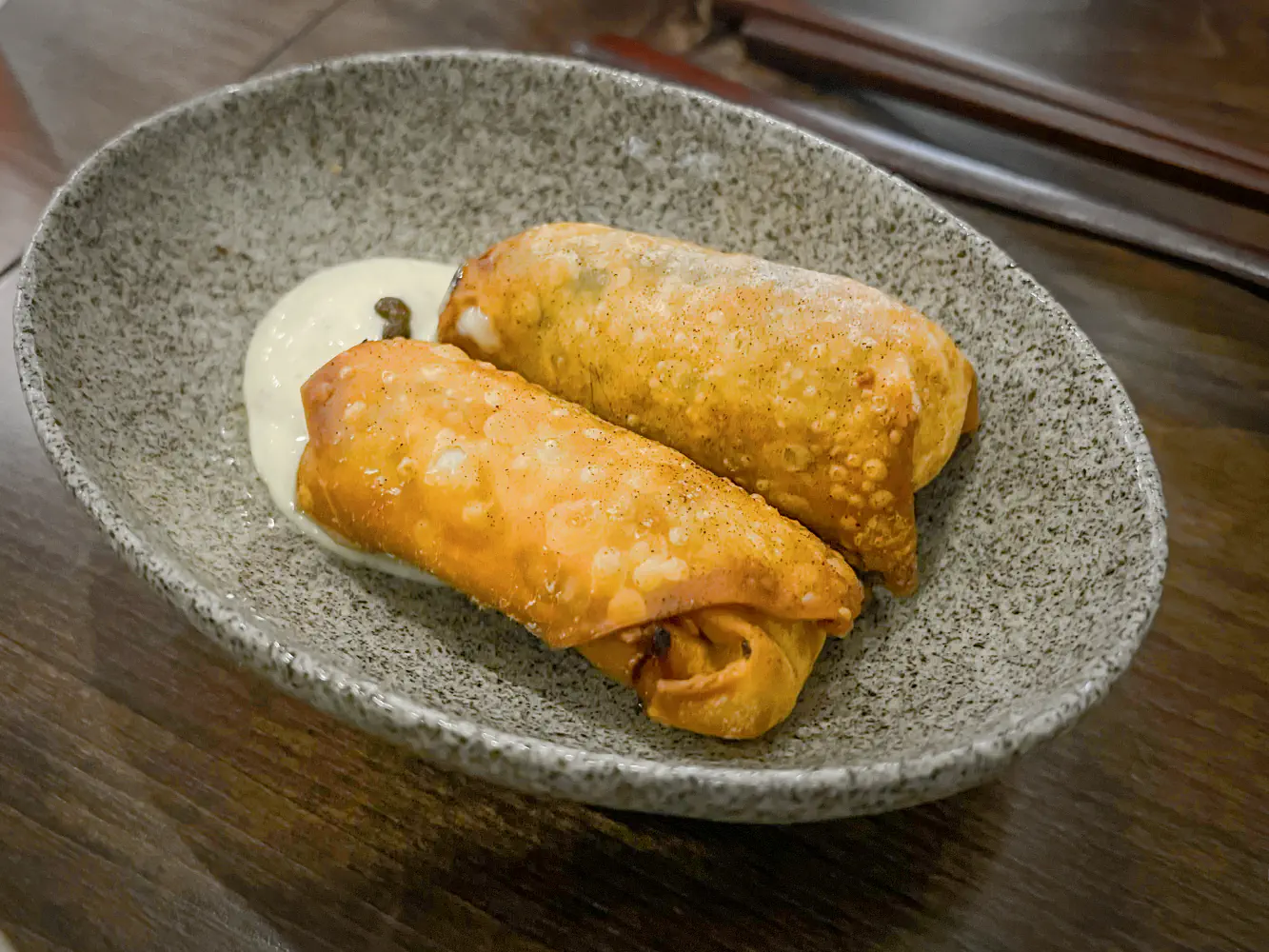
The second course for my partner was the Pork Mandoo, which came with sancho mayo and sesame leaf. The mandoo came like 2 egg rolls. The inside of the mandoo had sesame leaf-wrapped meat. The meat was surprisingly very juicy, and the mandoo was very crispy. The mayo did complement the mandoo, and it’s best to think of this as the flavors of fried mandoo but presented as a stick.
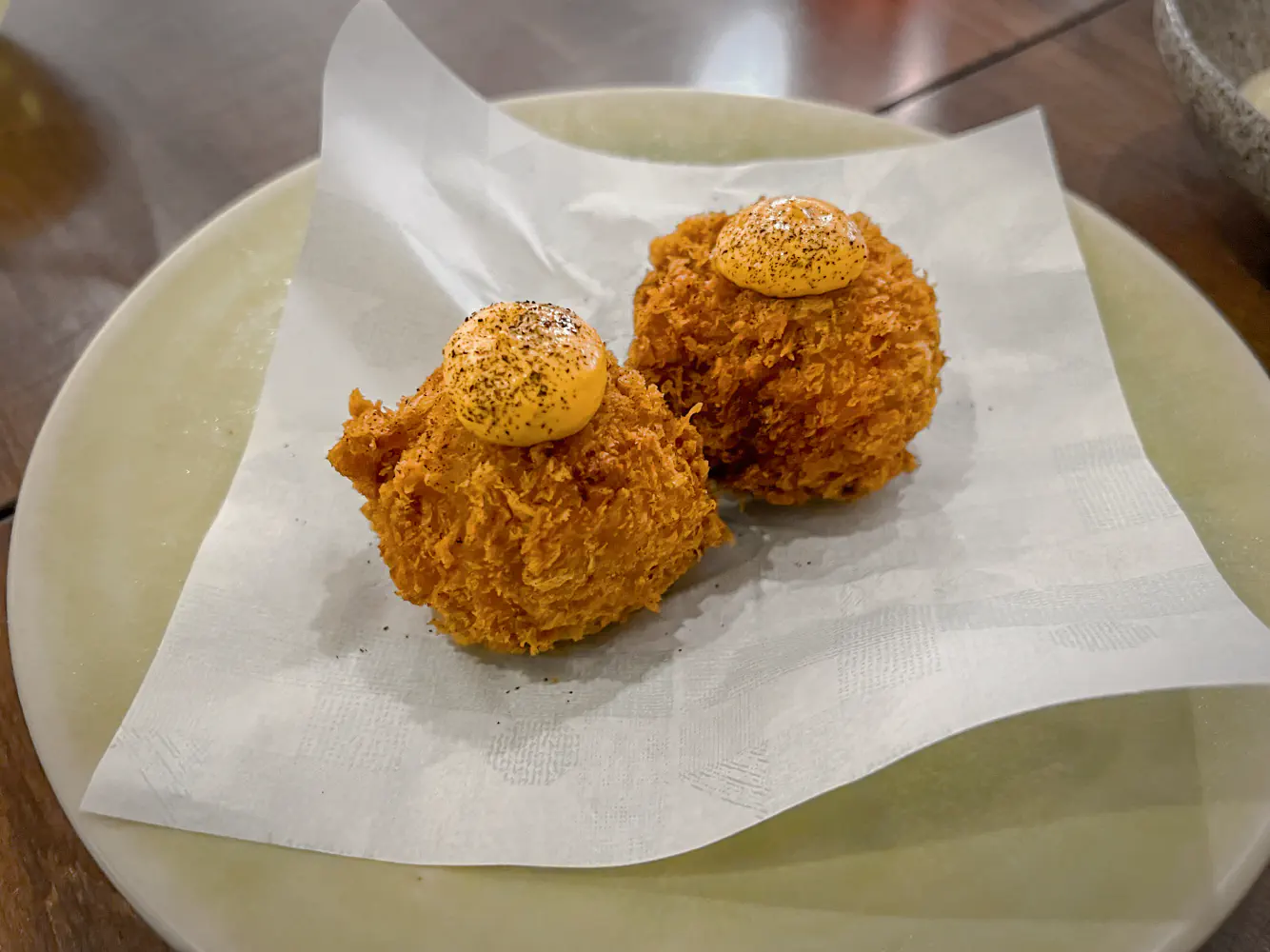
My second course was the Corn Twigim, which was dubu seafood ball, gochujang romesco, and scallion powder. This was basically fried seafood paste balls with little corn kernels in it. The ball was very crispy, and it was very hot. When you bite into these, you have to be very gentle in case if the oil and juice is still scalding hot. The flavors of this was pretty good.
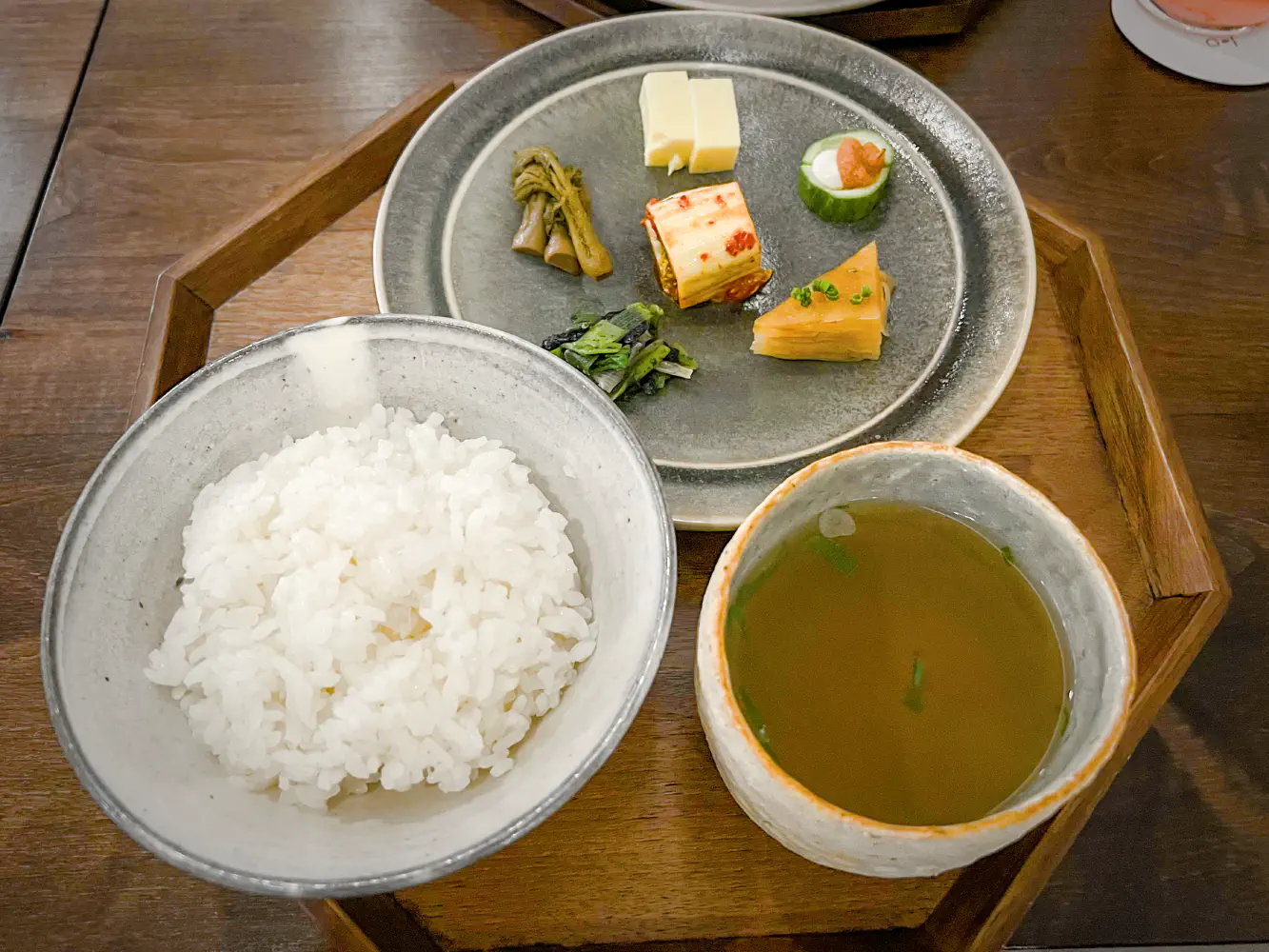
The Bansang came with rice, soup of the day, and seasonal banchan. The soup of the day reminded me of a light broth, and it had some tofu in it.
In the banchan starting at 12:00, going clockwise ending in the center:
- Jjim - steamed or braised ingredients. We had tofu here. It didn’t have too much flavor in it, but it had a nice texture.
- Saengchae - fresh vegetable dishes. This was some sort of cucumber with some things in it.
- Jorim - simmered ingredients in seasoned broth or sauce. This was thin sheets of potato simmered in some broth seasoning.
- Namul - variety of seasoned vegetable dishes. This was some sort of flattened green onion stalks.
- Jangajji - pickled vegetables with jang. They pickled some sort of root vegetable that I don’t quite remember. The flavor of this was similar to those Chinese pickled cucumbers from Chinese grocery stores.
- Kimchi - fermented vegetable dishes. The center was the kimchi, and this unfortunately was not nearly fermented enough. It did not have enough sour notes to it, so it ended up being on the bland side.
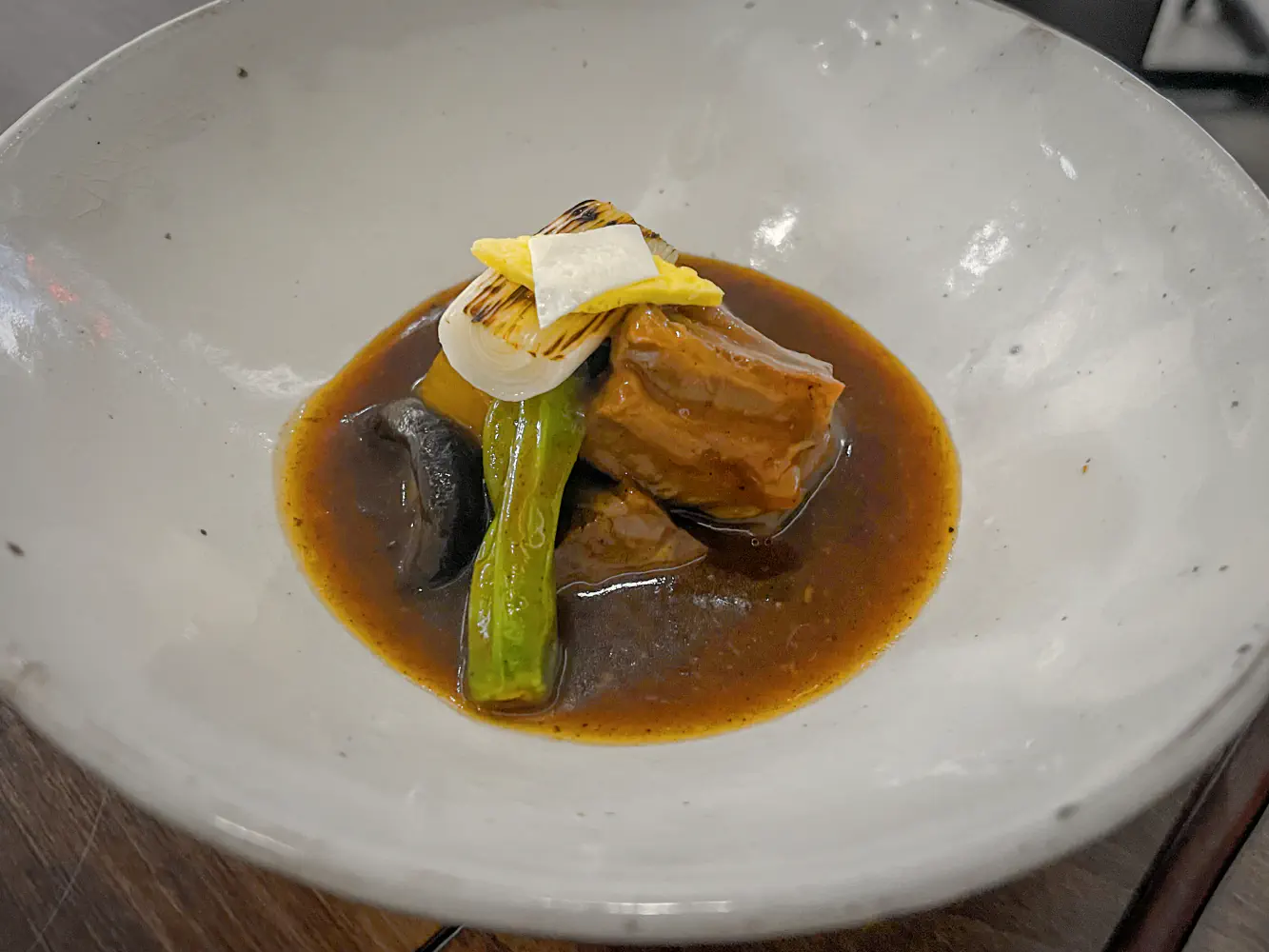
My partner’s final meat course was the Beef Shank, which came with galbi jjim sauce, shishito pepper, and pyogo mushroom. The shank was pretty good, albeit, some parts of it were slightly tough. I don’t think it was braised long enough, but maybe that’s the intention. The sauce was slightly sweet, and it reminded me of Korean rustic home cooking.
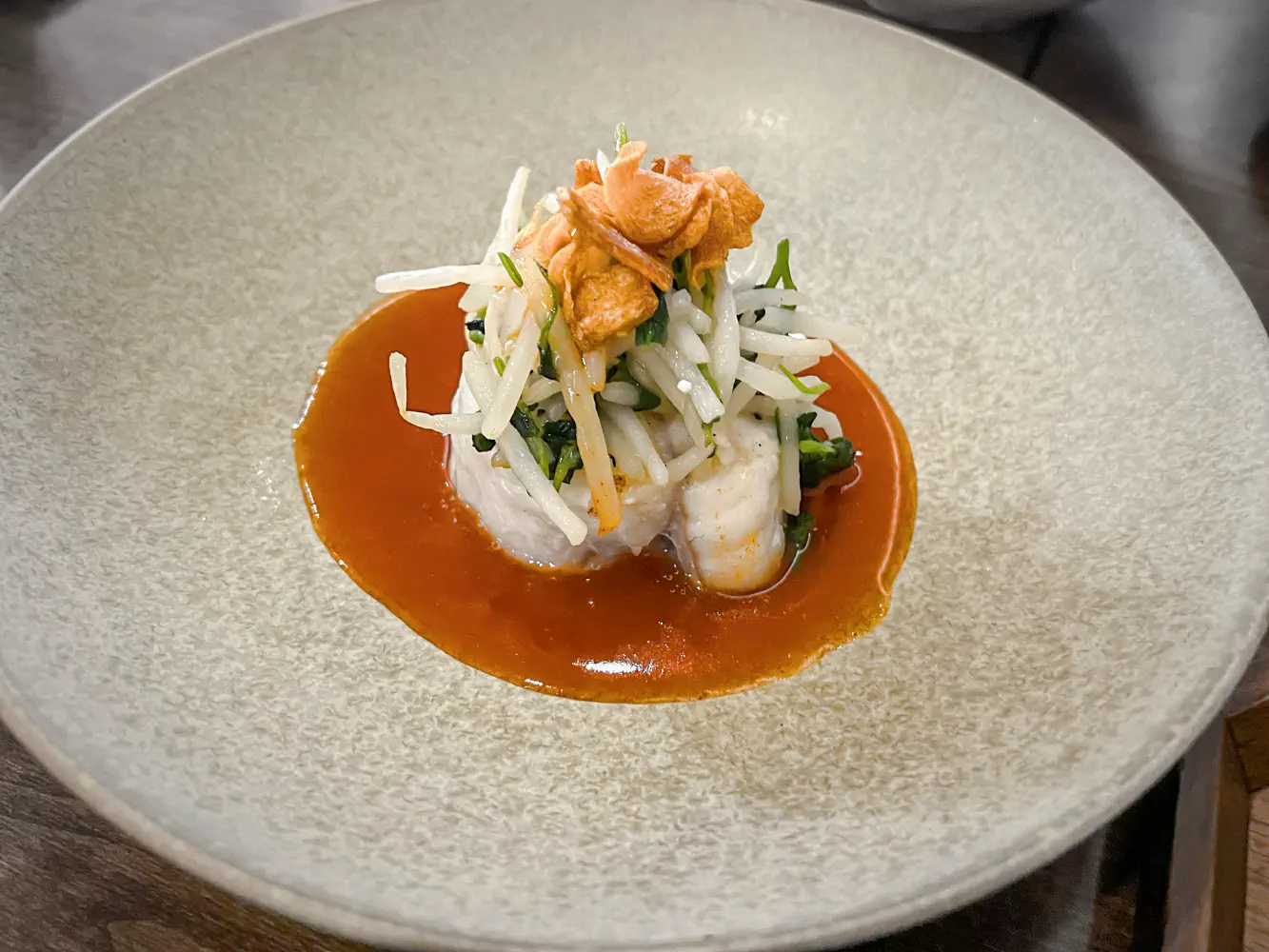
My final meat course was the Steamed Monkfish, which came with bean sprout, minari (water celery), and gochugaru sauce. This was actually pretty good. They gave a decent, hearty monkfish steak. The gochugaru sauce wasn’t that spicy, and any heat faded rapidly away once it hit your tongue.
Overall Impression
Like many of the other Korean restaurants in the city, Odre’s flavors target more accessible priced clientele, and the value proposition was admirable. I thought the food was not amazing out of this world, but for the price, it’s reasonable. Definitely check this out if you want to try out a low-cost Korean tasting menu in the East Village area.
Yelp Jabs
We were super looking forward to their rice as it was cooked super fresh in a giant iron pot.
I also saw that walking into the restaurant, and I was hoping for many of the dishes to have some big flavors. Unfortunately, they were rather lacking, but maybe in time, they will improve the flavors to be more bold.
Food was great overall, my favorite was complimentary potato chips + beef shank + sesame chicken (never imagined myself liking cold chicken dish/salad) + watermelon bing-soo. The only things that I would like to see for myself is for fried dishes to have a lighter batter, I personally like mine with less batter.
This Elitist from Seattle apparently has not had cold chicken dishes before in Korean/Chinese cuisines. In humid climates, it’s quite common to find people eating cold sesame chicken noodles with julienned cucumbers because it cools down the body immensely. I found the sesame chicken here to be much more timid, and I guess this Elitist’s palette was probably more light since they thought the fried dishes needed to have lighter batter. I thought the batter was already pretty light.
Revisions
- Sep 27, 2024 - Initial revision.